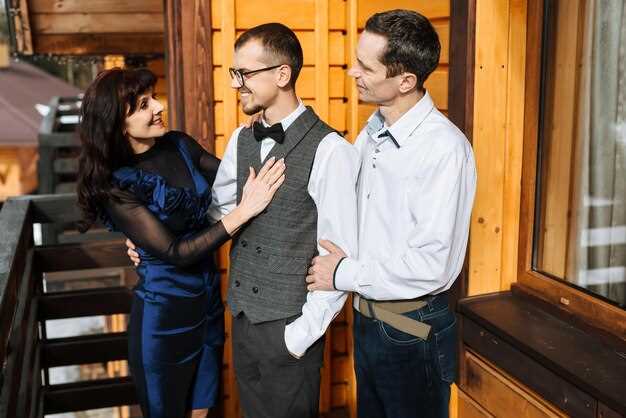
Conflicts within clubs can arise due to various reasons, including differing opinions, competition for resources, and miscommunication among members. These disputes can hamper the progress of the organization and create a toxic environment that discourages participation. Therefore, effective resolution strategies are paramount in maintaining harmony and driving the club towards its goals.
The resolution of conflicts in a club setting requires a professional approach that emphasizes communication, understanding, and collaboration. By fostering an environment where members feel safe to express their concerns and viewpoints, clubs can address issues before they escalate into significant problems. Strong leadership plays a crucial role in mediating these conflicts, guiding discussions, and ensuring that all voices are heard.
Implementing structured conflict resolution techniques, such as mediation and negotiation, can significantly improve the outcome of disputes. These methods not only aim to resolve the immediate issue but also help in building long-term relationships among members, reinforcing the idea that differences can be managed constructively. As clubs navigate the complexities of interpersonal dynamics, adopting professional approaches to conflict resolution becomes not just beneficial, but essential for sustained success.
Identifying Root Causes of Club Conflicts

Understanding the root causes of club conflicts is essential for effective conflict resolution. Conflicts often arise from underlying issues that may not be immediately visible. By identifying these root causes, clubs can address problems systematically and foster a healthier environment.
One common source of conflict stems from miscommunication among members. Differences in interpretation can lead to misunderstandings, causing friction within the group. Establishing clear communication channels and encouraging open dialogue can help mitigate this issue.
Another prevalent cause is differing values and priorities. Members may have contrasting visions for the club’s direction or focus. It is crucial for leadership to facilitate discussions that help align the group’s objectives, ensuring that everyone’s voice is heard and considered.
Additionally, competition for resources, such as funding or leadership positions, often fuels conflict. When members feel their access to resources is threatened, tensions can arise. Effective resource management and equitable distribution strategies can alleviate this source of tension.
Lastly, personal grievances or unresolved past issues can also contribute to ongoing conflicts. Creating a culture of trust and respect allows members to air their grievances in a constructive manner, fostering resolution rather than perpetuating discord.
By identifying and addressing these root causes, clubs can implement strategic conflict resolution practices, ultimately strengthening the group’s cohesion and effectiveness.
Implementing Mediation Techniques in Club Settings
Mediation serves as a vital tool for conflict resolution within club settings, promoting understanding and collaboration among members. Clubs often experience disputes due to varying interests, personality clashes, or differing objectives. To effectively address these issues, implementing structured mediation techniques can lead to successful outcomes.
One fundamental aspect of mediation is the presence of a neutral mediator, who facilitates dialogue between conflicting parties. This mediator should possess strong interpersonal skills, ensuring that all voices are heard and respected. By establishing ground rules for communication, the mediator can help create a safe environment where members feel comfortable expressing their concerns.
Additionally, active listening is crucial during the mediation process. Both parties must practice active listening to truly understand each other’s perspectives. This technique not only promotes empathy but also helps in identifying the underlying issues contributing to the conflict, which is essential for genuine resolution.
Another effective technique is brainstorming potential solutions collaboratively. After understanding the root causes of the conflict, parties should be encouraged to explore various options together. This inclusive approach fosters creativity and increases the likelihood of finding a mutually beneficial resolution.
It is also important to follow up after mediation sessions. This can involve setting up regular check-ins to monitor the implementation of agreed-upon solutions. Such follow-ups demonstrate commitment to resolving the conflict and reinforce the relationships among club members.
In conclusion, effective mediation techniques not only aid in resolving conflicts but also contribute to a more cohesive club atmosphere. By fostering open communication, active listening, collaborative problem-solving, and ongoing support, clubs can create a positive environment that minimizes future disputes and encourages teamwork.
Developing a Conflict Resolution Framework for Clubs

Establishing a conflict resolution framework within a club is essential for maintaining a harmonious environment. The framework should begin with clear communication protocols that encourage open dialogue among members. This involves setting ground rules for discussions and ensuring that every member feels heard.
Next, the framework should outline the stages of conflict resolution. These typically include identifying the conflict, understanding each party’s perspective, and collaborating on a solution. Designating a neutral mediator can facilitate this process, providing an unbiased approach to solving disputes.
Training members on conflict resolution techniques is also crucial. Workshops and seminars can equip club members with the skills necessary to navigate disagreements effectively. Topics such as active listening, empathy, and negotiation strategies empower members to address issues proactively.
Implementing regular reflection sessions allows clubs to review past conflicts and assess the effectiveness of the resolution strategies employed. This practice fosters a culture of continuous improvement and adaptation, ensuring that the conflict resolution framework evolves with the needs of the club.
Finally, having an accessible written policy on conflict resolution can provide a reference point for all members. This document should detail the procedures and expectations regarding conflict management. By creating a structured approach, clubs can minimize misunderstandings and promote a positive atmosphere.




